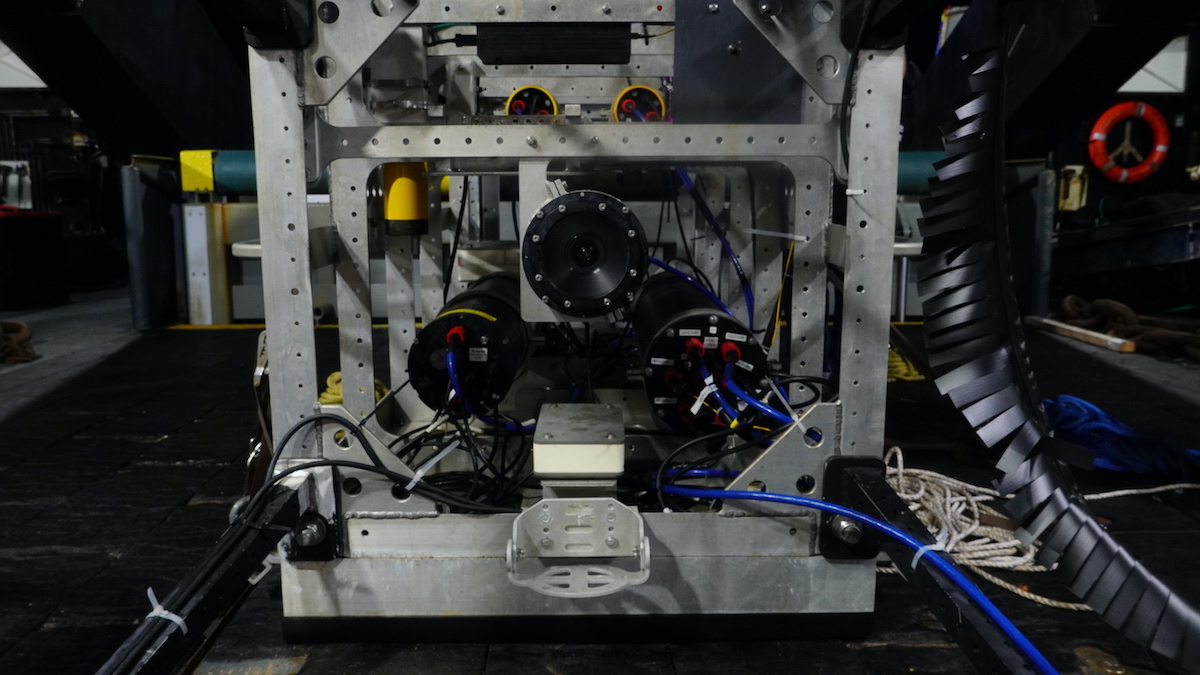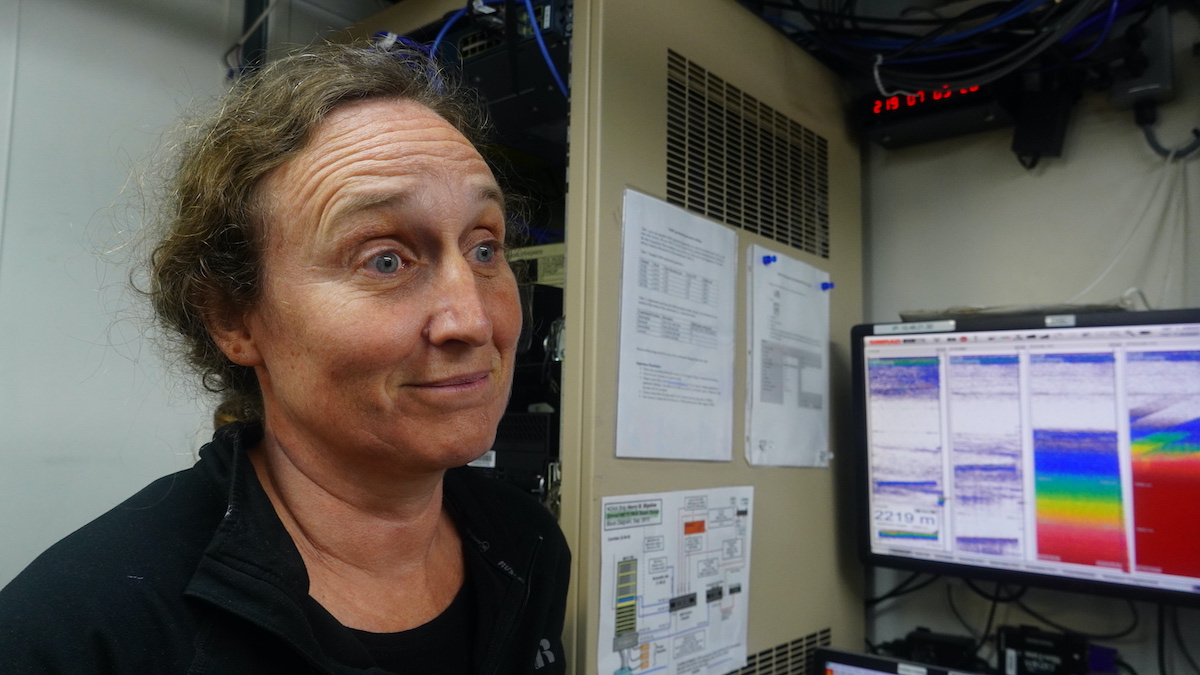Field Notes: Deep-Sea tests the waters August 8, 2022
Early on today, the MOCNESS team faced a serious problem: a vital piece of machinery had been left onshore, over 100 nautical miles away. It’s a simple bracket that holds the motor, but it’s vitally important because it controls the unfurling of each net at precise times. But within hours, the team had come up with a MacGyver solution that would allow deployments to go smoothly—with a little help from the ship's engineers, the crew was able to weld a new bracket out of spare materials already aboard.
At 2 a.m., science personnel woke up from late night naps with coffee in hand, ready to get the first deployment of the cruise underway: sending Deep-See, a towed platform that carries acoustic sensors and cameras, down into the twilght zone. That's no small ffeat: weighing in at a whopping 2,500 pounds (1,134 kilos), it requires many hands–and a strong winch–to get into the water. Once there, however, it can return valuble data and images back to the ship in real time.
The team struggled a bit when the Bigelow meandered south of a bioacoustics mooring and Deep-See’s cable hit the strong currents of the Gulf Stream, jostling the platform around and challenging its ability to collect data.
“It was definitely bumpy, but there was lots of interesting information too,” Lavery said. “I think tomorrow night we’ll get some really nice migration data.”
Stay tuned!
-Andrea Vale, OTZ Field Correspondent









